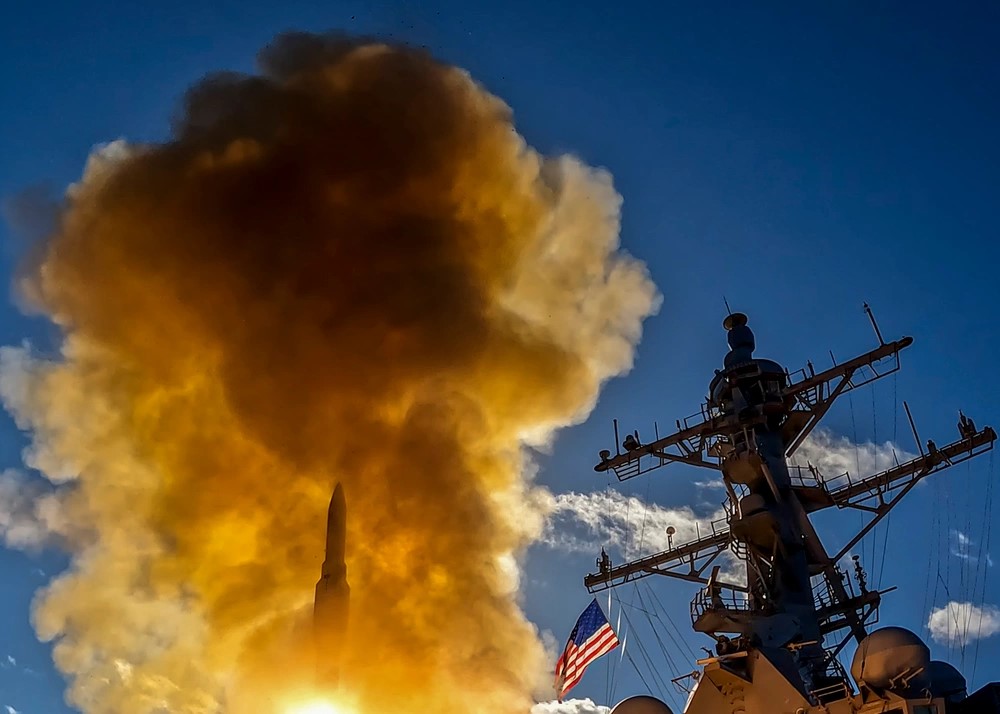- cross-posted to:
- [email protected]
- [email protected]
- cross-posted to:
- [email protected]
- [email protected]
As American warships rack up kills against Houthi drones and missiles in the Red Sea, Pentagon officials are increasingly alarmed not just at the threat to U.S. naval forces and international shipping — but at the growing cost of keeping them safe.
U.S. Navy destroyers have shot down 38 drones and multiple missiles in the Red Sea over the past two months, according to a Defense Department official, as the Iran-backed militants have stepped up attacks on commercial vessels moving energy and oil through the world’s most vital shipping lanes. On Saturday alone, the destroyer USS Carney intercepted 14 one-way attack drones.
Houthi leaders have said the attacks are a show of support for the Palestinians, and that they won’t stop until Israel halts its operations in Gaza. Defense Secretary Lloyd Austin on Monday announced a new international maritime coalition to safeguard shipping and counter the attacks.
The cost of using expensive naval missiles — which can run up to $2.1 million a shot — to destroy unsophisticated Houthi drones — estimated at a few thousand dollars each — is a growing concern, according to three other DOD officials. The officials, like others interviewed for this story, were granted anonymity to describe sensitive operations and internal deliberations.



Make cheaper missiles? Everyone knows that arms factories are printing money.
Or don’t bring a missile to a drone fight.
US not really looking to fight, or you’d be saying don’t bring drones to a missile fight.
More like electronic warfare, CIWS, and anti-air guns with air burst ammunition.
The problem is that once a drone has CWIS then automated killbots are a thing.
CIWS is used for short range anti-projectile and air defense, not mounted to drones…
Also, the offensive weapon platform used has nothing to do whether drones become “killbots”, that’s determined by the decision making and control mechanisms e.g. man vs machine vs augmented.
I understand how CWIS works now as a stationary defensive battery found on in the wild. My point was speaking to the future of drones and war on the economic front, a 2k drone will bankrupt the most expensive military in the world because the vast disparity in price points is unsustainable to the America.
Now, taking that thought, let’s pretend that the answer is a short range, high mobility device that is an anti-drone device. If you make that, it may as well be a preventative measure against other sub sonic projectiles too, like grenades.
Next, we realize that drones are small enough right now to be man portable enough that it’s very real future is as standard equipment for the front line or probably a new specialist. It makes sense that if a drone is man portable enough and can stop grenades, you have effectively made your enemy carry dead weight that’s high risk to the front.
So now most militaries will use drones in the future and they can reasonably be assumed to be either for recon or defense. A defensive drone which stops incoming projectiles is… CWIS by another name.
Now, ina post-grenade fight, why not turn the armed and self targeting helper device to be an autonomous firewatch buddy who is always ready to provide cover or recon. An autonomous kill bot.
Have some imagination.
Sir, this Wendy’s is aboard a USN vessel.
The abbreviation is Close-in Weapon System, CIWS not CWIS
Of all the things to critique in his reply, swapping a couple letters in the acronym should be the last.
TBH, I sometimes have to say the full name in my head to prevent myself from making the same mistake.
The most charitable take on their reply is that it was rushed after skimming half a dozen Wikipedia articles.
But it’s so disconnected from the topic, that it feels like something else is going on…
Removed by mod